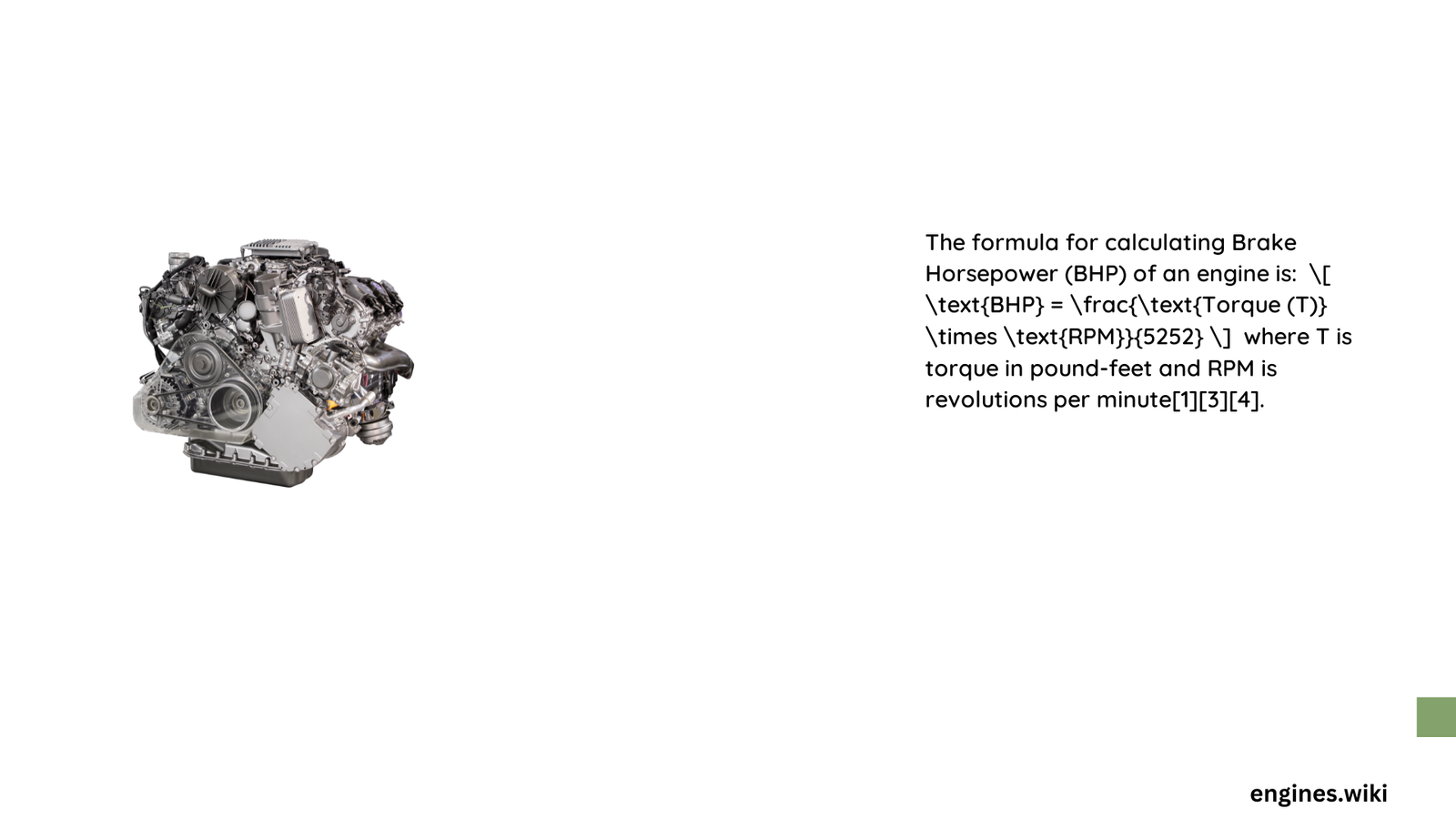The formula for BHP of engine is a critical mathematical representation that quantifies an engine’s power output by integrating multiple variables such as flow rate, dynamic head, specific gravity, and efficiency. Engineers and automotive professionals utilize these sophisticated calculations to determine precise power generation, understanding how mechanical systems transform energy into measurable performance metrics across various engine types and applications.
What Is the Core Formula for BHP of Engine?
Centrifugal Pump BHP Calculation
The fundamental formula for calculating brake horsepower (BHP) in centrifugal pumps is:
[ \text{BHP} = \frac{Q \times DH \times SG}{3960 \times E} ]
Key Variables Explained:
- Q: Flow rate (gallons per minute)
- DH: Total dynamic head (feet)
- SG: Specific gravity of fluid
- E: Pump efficiency (decimal representation)
Electric Motor BHP Formulas
Single-Phase Motor Calculation:
[ \text{HP} = \frac{Volts \times Full\ Load\ Amps \times Efficiency \times Power\ Factor}{746} ]
Three-Phase Motor Calculation:
[ \text{HP} = \frac{Volts \times Full\ Load\ Amps \times Efficiency \times Power\ Factor \times 1.73}{746} ]
How Do Torque and RPM Impact BHP?

The relationship between horsepower, torque, and RPM is defined by:
[ \text{HP} = \frac{Torque \times RPM}{5252} ]
Practical Example:
Consider an engine producing:
– 200 lb-ft torque at 3000 RPM
– Calculated Horsepower: [ \frac{200 \times 3000}{5252} \approx 114.4 \, \text{HP} ]
What Factors Influence BHP Calculations?
Critical Performance Determinants:
- Engine Displacement
- Larger engines typically generate more power
-
V8 engines: ~5.0 liters, producing 400 HP at 6000 RPM
-
Environmental Conditions
- Altitude impacts air density
-
Power reduction: 3-4% per 1,000 feet elevation
-
Fuel Type Variations
- Gasoline: Higher power-to-weight ratio
- Diesel: Superior torque characteristics
Comparative Performance Table
| Engine Type | Average BHP | Typical RPM Range | Efficiency |
|---|---|---|---|
| Gasoline V8 | 400-450 HP | 5000-7000 | 85-90% |
| Diesel V6 | 250-350 HP | 3500-5500 | 75-85% |
| Electric Motor | 200-300 HP | 0-6000 | 90-95% |
Advanced Considerations for BHP Calculation
Precision Measurement Techniques
- Use dynamometer for accurate power assessment
- Consider ambient temperature and pressure
- Account for mechanical drivetrain losses
Recommended Calculation Approach
- Gather precise measurement data
- Apply appropriate formula
- Validate results through multiple testing methods
- Consider environmental correction factors
Practical Implementation Strategies
Professional Recommendations
- Utilize calibrated measurement equipment
- Perform multiple test cycles
- Document environmental conditions
- Apply standardized correction factors
Technical Insights and Limitations
Formula Constraints
- Formulas represent theoretical maximum performance
- Real-world conditions introduce variability
- Mechanical inefficiencies reduce actual output
Conclusion
Understanding the formula for BHP of engine requires comprehensive knowledge of multiple interconnected variables. Precise calculations demand meticulous data collection, advanced mathematical modeling, and nuanced interpretation of complex mechanical systems.
